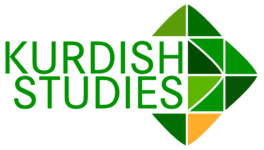In-vitro and In-silico Studies of Thiazole Derivate (R2) Prevents Platelet Stress Fiber Production on Fibrinogen-coated Surfaces.
Rehana Perveen
Mahwish Akhtar
Noor Jahan
Sobia Akhter
Muhammad Zuhair Yusuf
Abstract
Platelets undergo aggregation and adhesion at areas of vascular injury in order to preserve hemostasis, although excessive activation can lead to the development of thrombotic diseases. Platelet morphology alterations occur prior to the occurrence of aggregation or adhesion following either physical or pharmacological activation. Platelet shape modifications can be reversed, unlike aggregation and adhesion. This dynamic process encompasses intricate chemical signalling networks and a multitude of diverse cytoskeleton proteins. Thiazole compounds with unique structures have the ability to initiate platelet shape change, hence influencing the formation of blood clots and potentially preventing or treating thrombotic diseases while minimizing the risk of excessive bleeding. This article elucidates the present comprehension of the mechanisms that cause changes in the morphology of platelets, the clinical implications of these changes, and potential targets for therapeutic intervention to regulate the dynamics of the cytoskeleton involved. The study investigated the mechanism of platelet spreading on the fibrinogen matrix with the aim of quantifying platelet activation. In order to facilitate the spreading of platelets, circular cover slips measuring 12mm in diameter were subjected to fibrinogen treatment followed by a washing process. Afterwards, platelets were permitted to attach to the immobilised proteins for a specific duration. Platelet attachment and the existence of actin nodules or stress fibers were seen using a Compound Fluorescent Microscope. The study utilised the AutoDockVina software to conduct in-silico research on the interaction between ligands and proteins (PDB=1EQG and 3ZDY) for antiplatelet activity, as well as antioxidant activity against the protein (PDB=1HD2). Platelets that were subjected to synthetic thiazole derivatives at varying concentrations (0.01µM, 0.05µM, 0.1µM, 0.3µM, and 0.6µM) had different degrees of spreading. The computational investigation demonstrated that the R2 thiazole derivative displayed negative binding energy (BE) values, specifically -7.56 kcal/mol for PDB 1EQG, -8.25 kcal/mol for PDB 3ZDY, and -6.51 kcal/mol for PDB 1HD2. These findings indicate a greater attraction of the ligand to the target protein. The investigation discovered that the R2 novel thiazole derivative had a significant capacity to hinder the clumping together of platelets in reaction to the activation of fibrinogen, particularly at doses of 0.05µM. The molecular docking research results showed that the R2 derivative exhibited greater antiplatelet and antioxidant actions in comparison to the reference molecule. More specifically, it exhibited a stronger inhibitory effect on platelet aggregation for the PDB-1EQG target.
